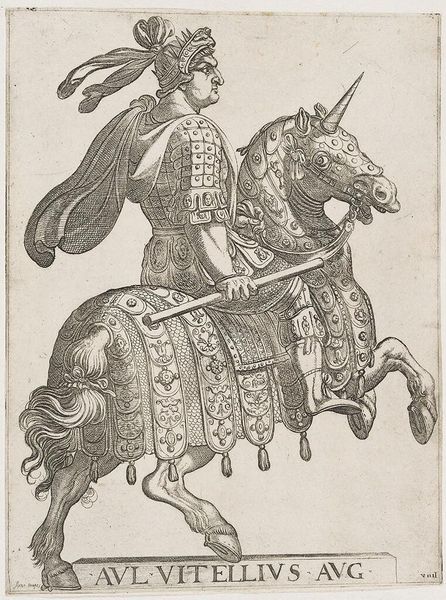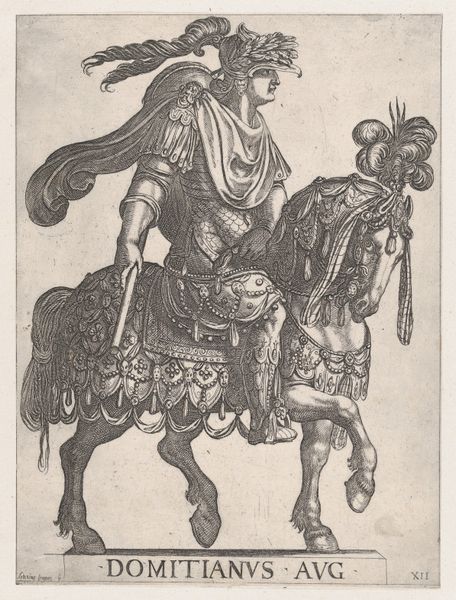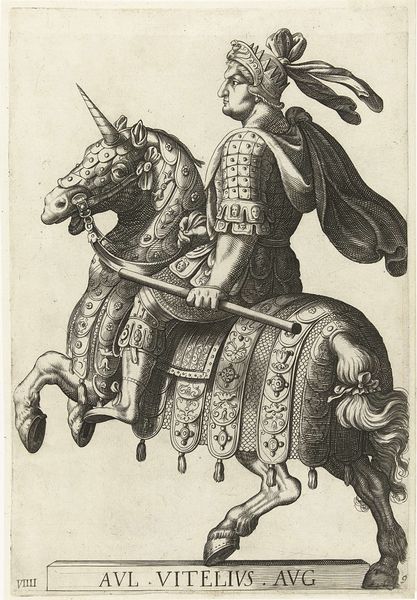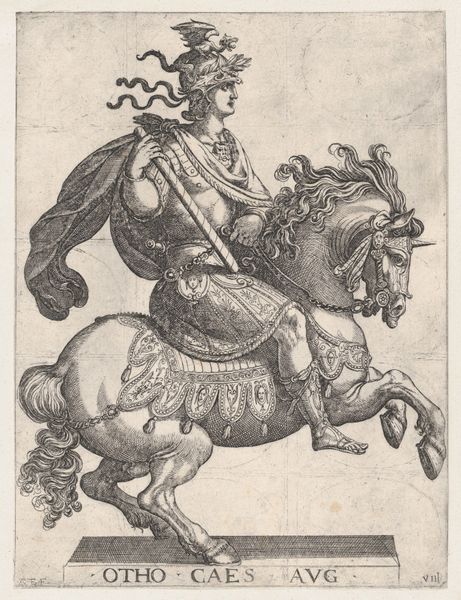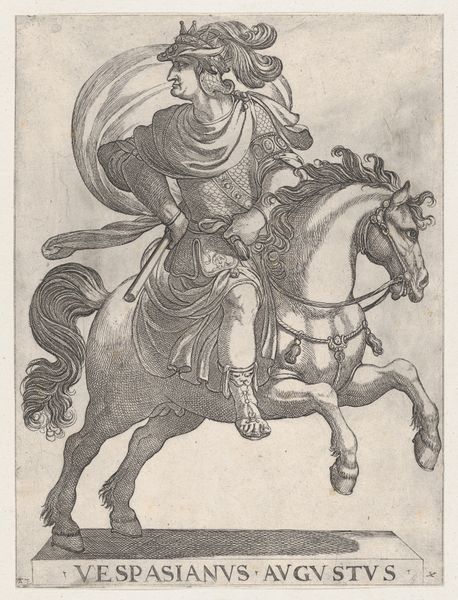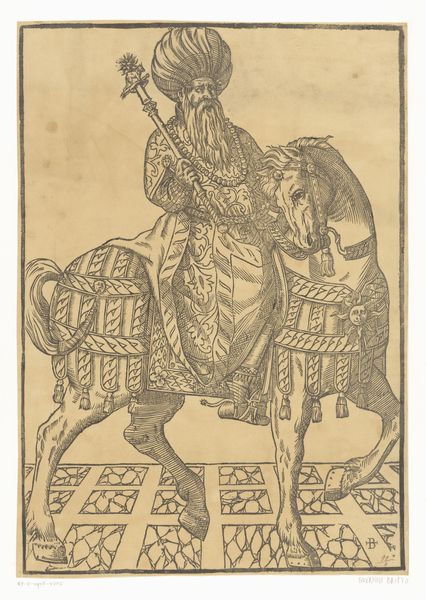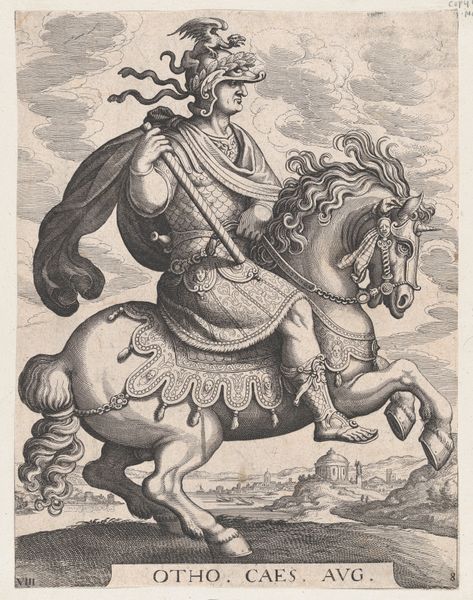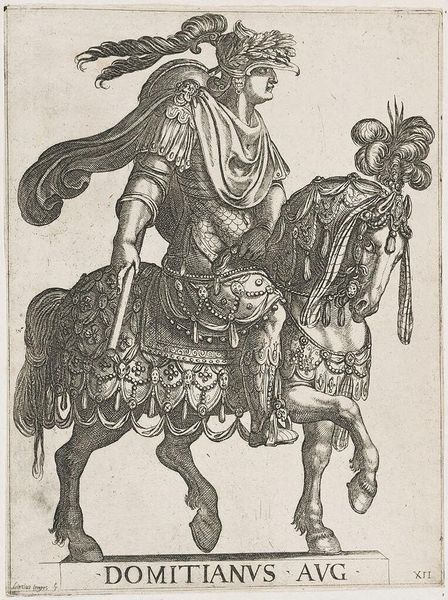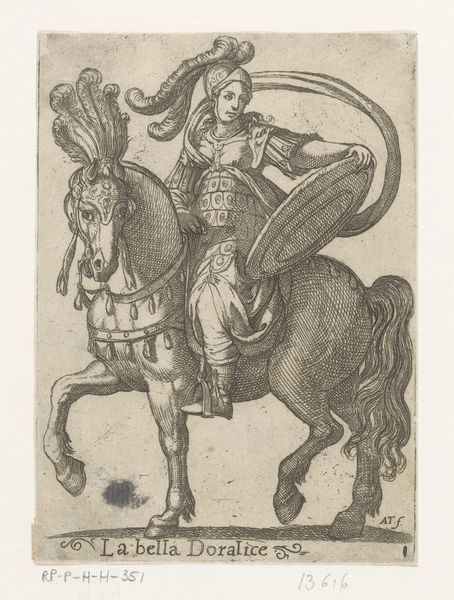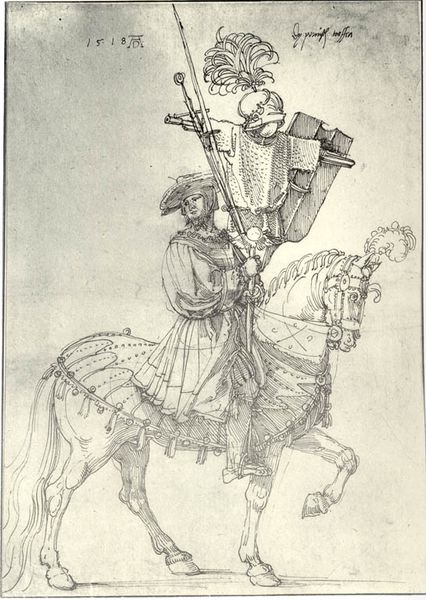
Plate 9: Emperor Vitellus on Horseback, from 'The First Twelve Roman Caesars' 1596
0:00
0:00
drawing, print, engraving
#
portrait
#
drawing
# print
#
figuration
#
ancient-mediterranean
#
history-painting
#
engraving
Dimensions: Sheet: 11 13/16 × 8 7/8 in. (30 × 22.6 cm)
Copyright: Public Domain
Curator: This is Antonio Tempesta's "Plate 9: Emperor Vitellus on Horseback, from 'The First Twelve Roman Caesars,'" created in 1596. It's an engraving, a print pulled from a carefully worked metal plate. Editor: It's striking! There's an incredible amount of detail in the lines. A kind of… rigid formality, I think. A lot of visual texture. Curator: Tempesta’s image taps into a long history of imperial representation. Equestrian portraits of rulers evoke power, control, and, of course, the legacy of the Roman Empire, which remained a potent symbol during the Renaissance. Notice how Vitellus is presented. Editor: Yes, I see. There is all that elaborate armor—on both horse and rider—contributing to this sense of impenetrable authority. All those repetitive circles and squares... almost oppressive in their exactitude. The rendering is less about true-to-life texture, though, and more about idealized representation, it seems. Curator: That’s right. It's about constructing an image that speaks to the weight of history. Look at the horse; the fact that it appears more akin to a war machine reinforces how such images project domination. Notice, too, how this relates to the real Vitellius. Editor: That stocky figure hardly seems flattering. It brings to mind accounts of Vitellius's reputation for being gluttonous. Curator: Exactly. Yet, the engraving elevates him by placing him firmly within the symbolic framework of Roman imperial power. These images shaped the understanding and memory of figures like Vitellius. It really invites consideration on what these images truly commemorate versus historical fact. Editor: A deliberate image-making. The visual rhythm creates this grand imposing, statement, but its detail and precision, maybe, also hints at something colder, and less glorified? Very thought-provoking. Curator: Indeed. By utilizing visual emblems tied to lasting imperial ideas, Tempesta presents viewers with how rulers wished to be perceived and remembered. It offers, even centuries later, insight into not only history, but psychology of leaders and cultural norms. Editor: The composition really leads you in – thanks for offering insight on this! Curator: My pleasure. It’s incredible how much meaning can be packed into even a relatively simple image.
Comments
No comments
Be the first to comment and join the conversation on the ultimate creative platform.
